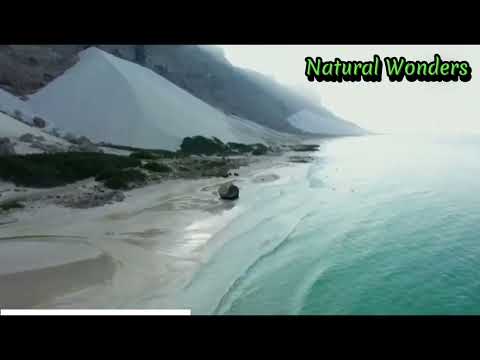
Tucked away in the Arabian Sea, far from the tumultuous mainland strife, lies a mystical island that seems to exist in a dimension all its own. Socotra Island, part of Yemen, holds within it a trove of natural wonders and biological treasures so unique that it is often dubbed the “Galápagos of the Indian Ocean.” This remote island unveils a surreal landscape filled with alien-like flora and fauna, untouched beaches, and a vibrant cultural heritage that whispers tales of ancient mariners and mystical legends.
### A Unique Biodiversity Hotspot
Socotra is an ecological gem, home to around 800 rare species of flora and fauna, nearly a third of which are found nowhere else on Earth. The dragon’s blood tree (Dracaena cinnabari) is perhaps the most iconic symbol of Socotra. With its umbrella-shaped canopy and red sap that mystically resembles blood, this tree not only adds an otherworldly aura to the landscape but also plays an integral role in the island’s ecosystem by providing shade for various species.
Another remarkable species is the Socotran fig tree (Dorstenia gigas), which sprawls across rocky surfaces with bulbous trunks and tangled branches. The island’s unique flora has evolved adaptations to survive its arid environment, with many species capable of storing water within their thick leaves or swollen trunks.
The animal life on Socotra is equally enchanting. The Socotra warbler, sunbird, starling, and sparrow represent some of the bird species endemic to this island. Reptiles like the Socotra chameleon and skinks also add to its biodiversity richness. Moreover, the surrounding coral reefs are vibrant ecosystems teeming with marine life including diverse fish populations and crustaceans.
### Geological Marvels
Socotra’s geographical formation adds another layer to its mystique. It split from the Gondwana supercontinent during the Mesozoic era around 250 million years ago. This geological isolation has preserved its prehistoric landscapes relatively intact through millennia.
The rugged terrain includes limestone plateaus full of caves featuring stalactites and stalagmites; sandy beaches dotted with shipwrecks; steep escarpments; and deep ravines that fill with monsoon rains creating temporary waterfalls—a rare sight in such arid climates.
### Cultural Heritage
The human history on Socotra is just as fascinating as its natural one. Believed by some historians to be the location of the original Garden of Eden, it has been referenced in numerous historical texts including some accounts by Marco Polo. Its inhabitants are predominantly indigenous Soqotri people who speak their own language—a Semitic tongue unrelated closely to any other.
Their culture has been shaped largely by their environment—traditionally they have relied on fishing, herding goats on stony highlands for meat and milk products like ghee; cultivating dates; and harvesting incense from trees which once made them valuable stops along ancient trade routes.
### Conservation Challenges
Despite its isolation and relative obscurity until recently—aiding conservation inadvertently—Socotra now faces threats from overgrazing by livestock introduced species such as goats that damage native plants’ chances at regeneration thus threatening overall biodiversity balance here further compounded by climate change impacts adding uncertainties about future water resources availability here making sustainable practices even more crucial moving forward preserving this ecological wonderland will require concerted efforts between local communities international conservation agencies aiming at empowering locals through education about sustainable practices while curbing illegal activities like poaching or non-sustainable land use changes ensuring that forthcoming generations may also experience these astonishing secrets revealed today about Yemen’s incredible paradise lost yet found again each time someone steps onto shores exploring what makes Socotra truly unique place our planet earth
